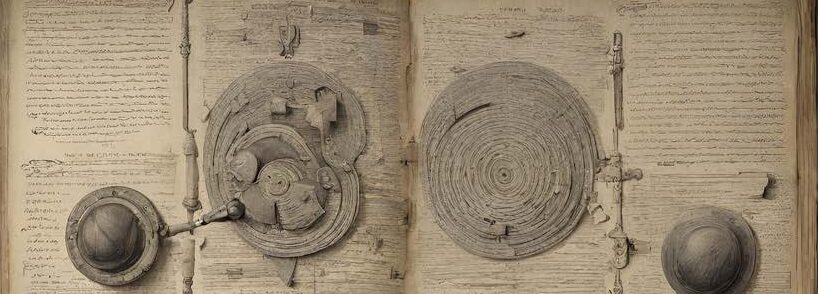The 15th century was a century of change with the invention of the printing press in 1436 CE by Johaness Gutenberg.
The printing press had the following impacts:
- Mass production of books
- Increasing literacy rates
- The start of the Enlightenment era

The printing press functioned as follows:
- Words were formed from moveable pieces
- Moveable pieces was placed on a lower plate
- Ink was applied to the moveable pieces
- A sheet were placed on top
- Pressure was applied to join the upper and lower plates

The Gutenberg printing press surpassed the number of handwritten books which reached 150 million copies in the year 1600 CE.
The printing press had the ability to mass produce books in multiple formats such as pamphlets, poems, and novels, setting the stage for the Reformation and the Enlightenment era.

The printing press had major social, intellectual, and political outcomes. It includes:
- The Enlightenment with the revival of ancient Greek and Latin, increasing literacy and scholarship in Europe.
- The Reformation where reformists such as Martin Luther King waged war against the catholic church by spreading half a million copies of Luther’s ideas.
- Democratised access to the written word with more laymen having access to books that were previously restricted to the clergy
The Gutenberg printing press evolved until it became the modern day printer.
- Woodblock printing (200 CE): Earliest form of printing, carving a design into a block of wood.
- Printing press (1436 CE): The first form of printing press developed by Gutenberg, uses moveable type to print text on a page.
- Lithography (1790): Uses Limestone and oil to cover stone in solution.
- Rotary press (1843): Uses cylinders which rotates the text as it is printed.
- Offset printing (1875): Transferring the ink from a plate to a rubber blanket and then to the printing surface.
- Modern printing (20th century): There is no contact with the paper as it is being printed with the use of jets and lasers.

Power and Knowledge
Initially, the printing press was restricted outside of Europe which shifted the balance of power to Europe.
Knowledge and the Printing Press
- One example of power imbalance is the Ottoman empire, a major empire in the 14-20th century.
- The printing press was banned for 300 years until the first book was printed in 1729 CE, printing was not widespread until 1838 CE.
- Strong opposition from religious leaders and scribes delayed the adoption of the printing press.
- The Middle East lagged behind Europe and became vulnerable to conquest, creating a massive imbalance in literacy.
- Europe became a dominant power in world politics, colonizing different regions in the process
- The consequences of colonialism and scientific progress is still evident to this day where the powers who had access to printing (and quick access to knowledge) still have great influence in global affairs and politics.

Final Remarks
Modern day printing practices are a direct descendent to the Gutenberg printing press
Reading and writing is associated to the physical book and since books are printed, this means that the printing press is one of the most common forms of reading and writing interfaces.
The printing press is directly linked to the act of reading and writing itself and its potential to determine the balance of power makes printing one of the most impactful inventions to date.
References
Cartwright, M. (2020). The Printing Revolution in Renaissance Europe. World History Encyclopedia. World History Encyclopedia. https://www.worldhistory.org/article/1632/the-printing-revolution-in-renaissance-europe/
Emre, S. (2014). On the late adoption of the printing press in the Ottoman Empire. Renaissance Universal. https://sureshemre.wordpress.com/2014/01/18/on-the-late-adoption-of-the-printing-press-in-the-ottoman empire/#:~:text=We%20have%20clear%20historical%20evidence
Encyclopaedia Britannica, inc. (n.d.). Discover how Johannes Gutenberg’s printing press increased the literacy and education of people in Europe. Encyclopædia Britannica. Retrieved October 18, 2023 from https://www.britannica.com/video/171689/history-printing-press-work-discussion-Johannes Gutenberg#:~:text=In%20Gutenberg’s%20printing%20press%2C%20movable,sharp%20images%20on%20the%20paper.
Fry, Stephen. (2021). Johan Gutenberg: Creator Of The First Printing Press (Full Stephen Fry Documentary) | Perspective [Video]. Youtube. https://www.youtube.com/watch?v=n-jkS5qOWS8&t=1427s&ab_channel=Perspective.
Instantprint (2016) Online business card printing and Flyer Printing, instantprint. Available at: https://www.instantprint.co.uk/printspiration/be-inspired/the-evolution-of-print (Accessed: 20 November 2023).
Liulevicius, V. (2020). The Social Impact of the Printing Press. Wondrium Daily. https://www.wondriumdaily.com/the-social-impact-of-the-printing-press/
